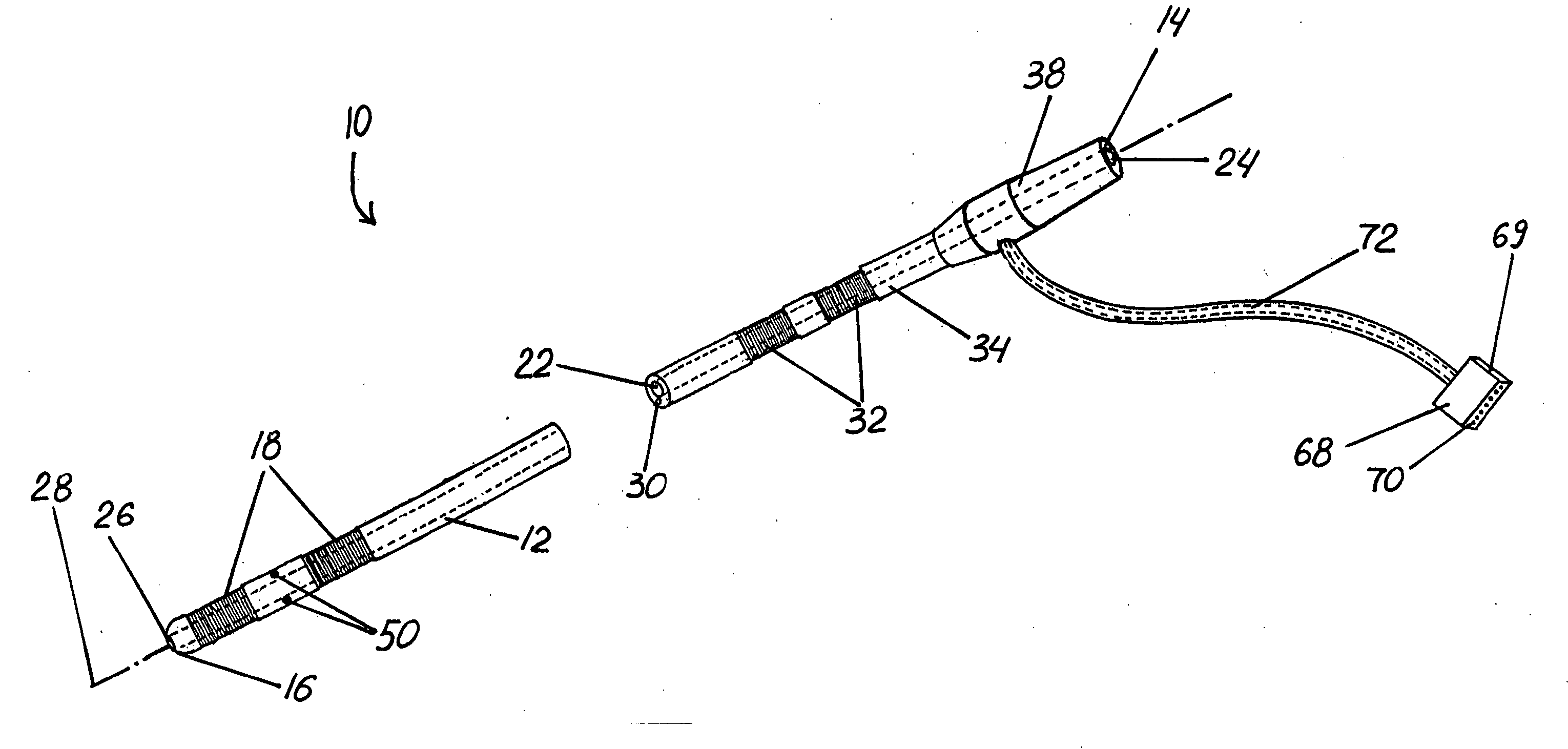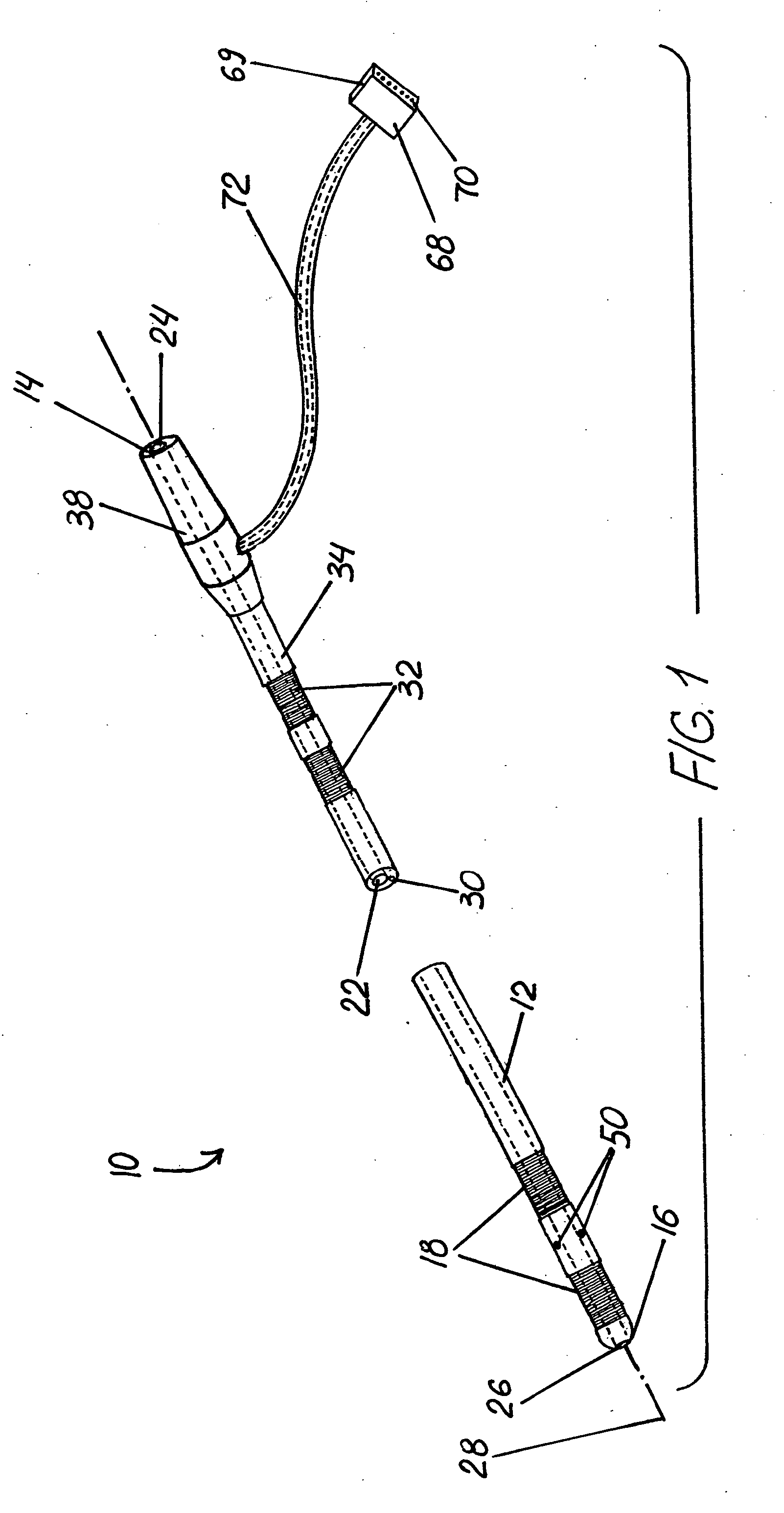Depth probe for intracranial treatment
a depth probe and intracranial treatment technology, applied in the field of depth probes utilized for intracranial treatment, can solve the problems of inability to precisely electrically stimulate very small volumes of the brain, patients often experience diminishing returns of such treatment, delicate and often difficult to insert along specific trajectories or lines of insertion, etc., to achieve efficient and effective transmission of readings
- Summary
- Abstract
- Description
- Claims
- Application Information
AI Technical Summary
Benefits of technology
Problems solved by technology
Method used
Image
Examples
Embodiment Construction
[0041] The figures illustrate preferred embodiments of an improved depth probe for intracranial treatment of a patient in accordance with this invention. FIG. 1 is a perspective view of depth probe 10 having an elongated, tubular body 12 extending from proximal end 14 to distal end 16. Body 12 preferably has a diameter between about 0.6 and 3.0 millimeters, most preferably about 1.0 millimeter.
[0042] As seen in FIG. 1, body 12 includes elements 18 secured to distal portion 20 at distal end 16. Body 12 is also provided with lumen 22 extending from opening 24 at proximal end 14 and in communication with aperture 26. Lumen 22 is a tubular channel extending for some length within body 12, preferably having a diameter of 0.5 millimeters or less. Body 12 is open at distal end 16 to form aperture 26. Opening 24 and aperture 26 are coaxial with lumen 22 along central axis 28 of body 12.
[0043] Elements 18 are conductively connected by leads 30 (seen in FIG. 1 running alongside lumen 22) to...
PUM
 Login to View More
Login to View More Abstract
Description
Claims
Application Information
 Login to View More
Login to View More - R&D
- Intellectual Property
- Life Sciences
- Materials
- Tech Scout
- Unparalleled Data Quality
- Higher Quality Content
- 60% Fewer Hallucinations
Browse by: Latest US Patents, China's latest patents, Technical Efficacy Thesaurus, Application Domain, Technology Topic, Popular Technical Reports.
© 2025 PatSnap. All rights reserved.Legal|Privacy policy|Modern Slavery Act Transparency Statement|Sitemap|About US| Contact US: help@patsnap.com



